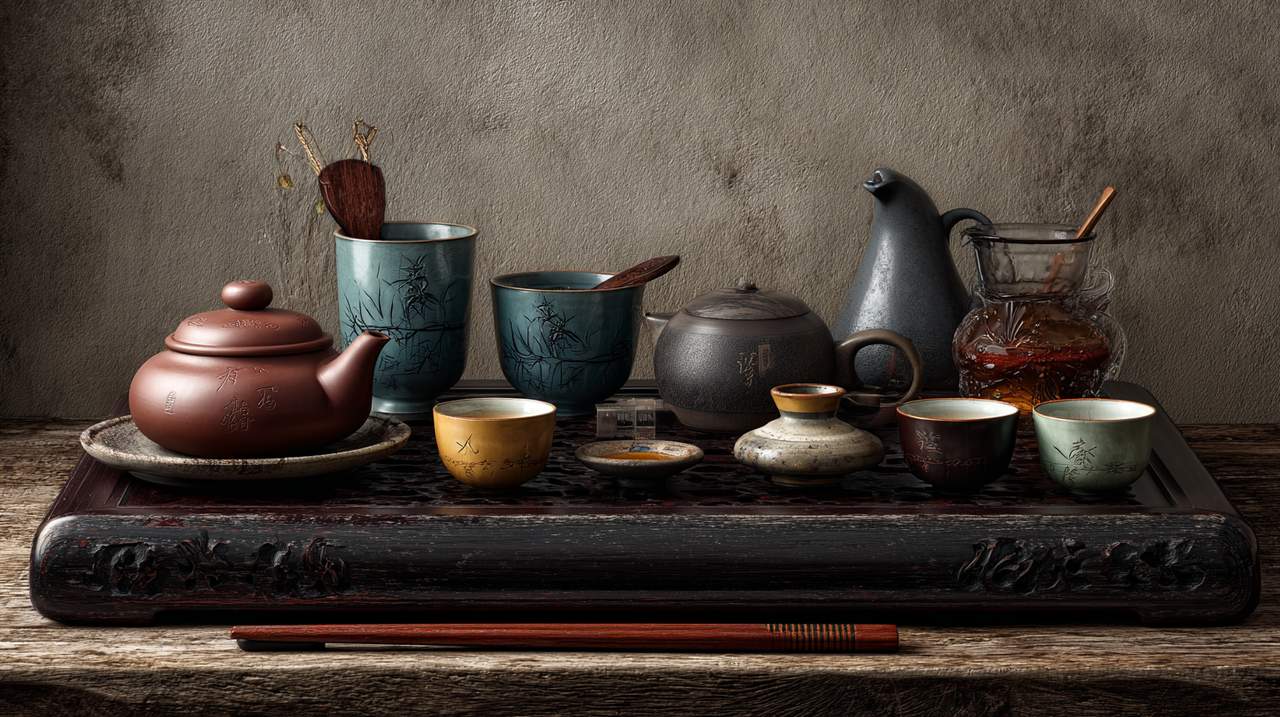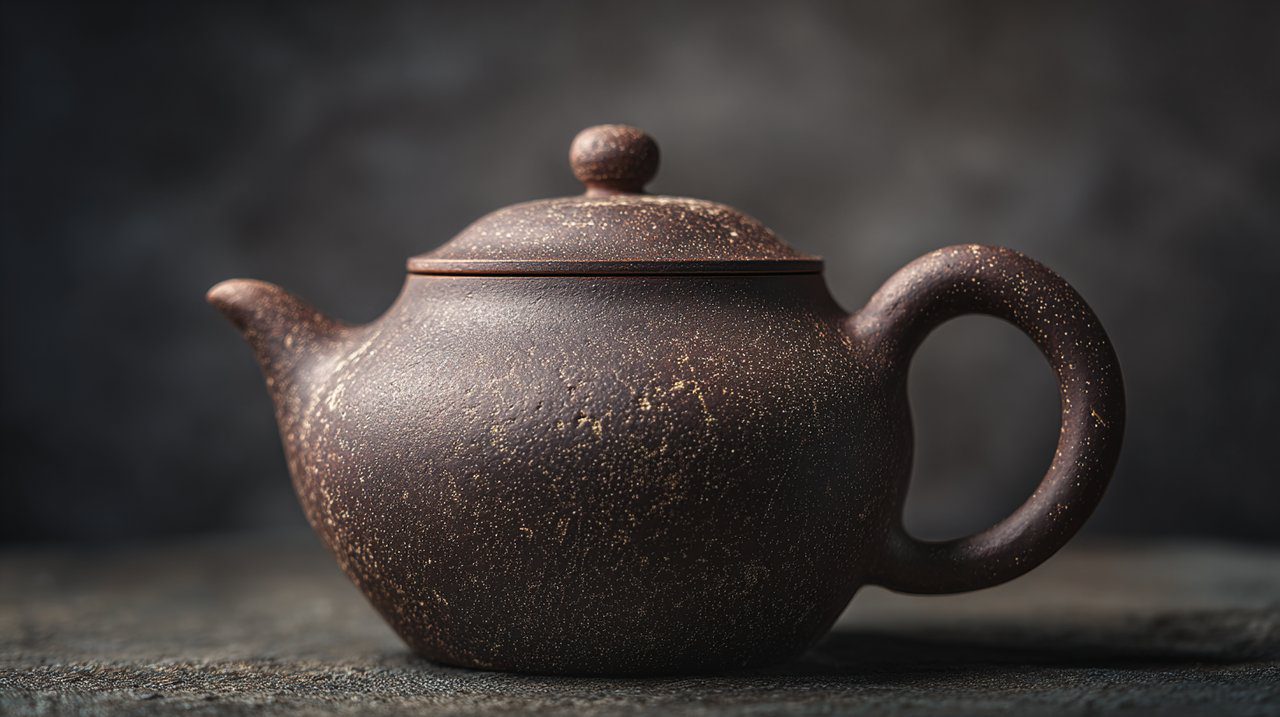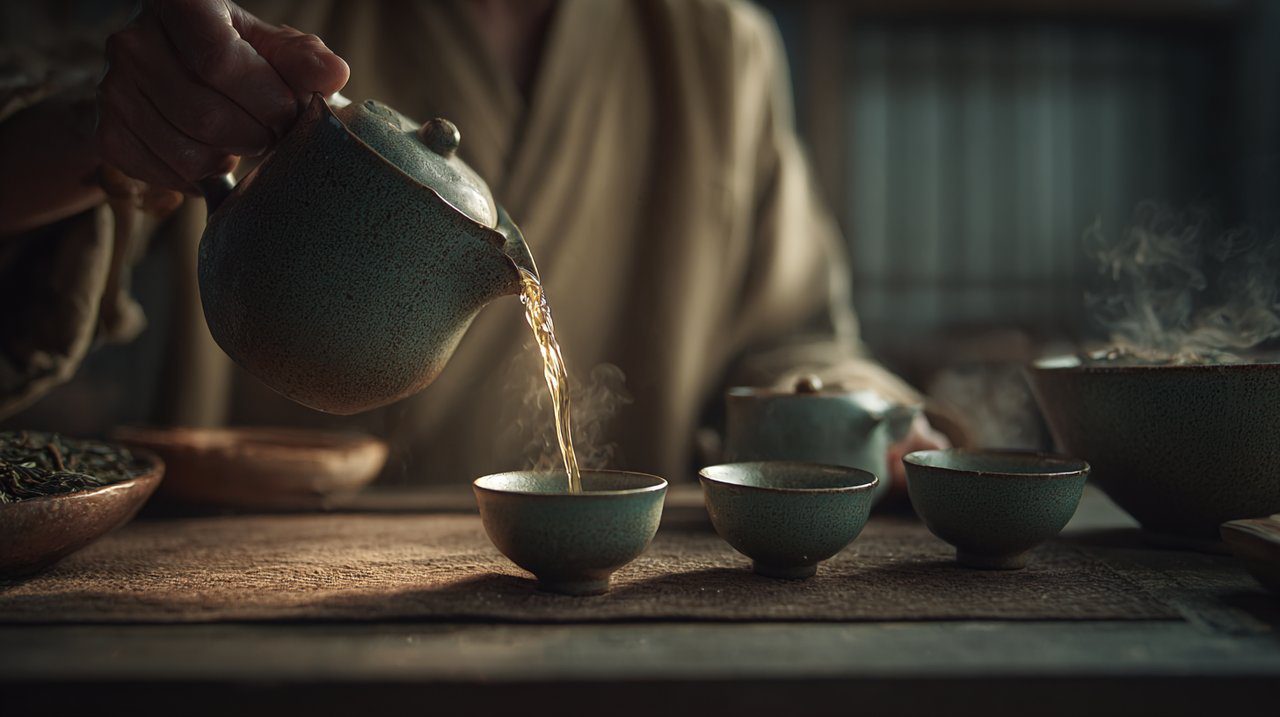The Silent Language of Clay and Porcelain: A Connoisseur’s Guide to Traditional Chinese Tea Sets
What if a collection of humble pottery and elegant tools could offer more than just a drink? Imagine them as keys, unlocking centuries of profound philosophy and a direct pathway to mindfulness. The traditional Chinese tea set is precisely this—it’s far more than functional ware.
It stands as a rich repository of history, a canvas displaying deep aesthetic principles, and a gentle, silent guide toward a more enriched way of living. By understanding its individual elements and the beautiful rituals it facilitates, we gain a unique lens into Chinese culture. More importantly, it’s an open invitation to cultivate presence in our often-hurried lives.

Anatomy of a Ritual: Essential Components Explored
Think of the Traditional Chinese Tea Set as a carefully orchestrated ensemble. Each piece plays a distinct and vital role in the delicate Tea Ceremony. Together, their collective presence elevates the simple act of brewing into a true art form.
The Heart of the Brew: Teapots and Gaiwans
The vessel you choose for infusion profoundly influences your tea’s character. Teapots, especially those crafted from porous Yixing clay, are cherished for their ability to gradually absorb the tea’s essence. Over time, this process actually enhances the flavor of subsequent brews.
In contrast, porcelain teapots, with their non-porous surface, offer pristine clarity. They are perfect for appreciating the subtle nuances of delicate green or white teas.
Alternatively, the Gaiwan (盖碗)—a versatile, lidded bowl—is ideal for brewing any type of tea. Its thoughtful design allows for intimate observation of the unfurling leaves and swift, precise pouring. This makes it a firm favorite for practitioners of Gongfu Cha.

Vessels of Appreciation: Tea Cups and Aroma Cups
Tea cups, which vary in size and material, serve as individual windows into your tea’s color and texture. Their delicate forms gently encourage us to take slow, deliberate sips, truly savoring each moment.
Unique to the Chinese tradition is the Aroma Cup (闻香杯, wenxiang bei). This tall, slender cup is specifically designed to capture and concentrate the tea’s fragrance. It offers a delightful preliminary sensory experience even before your first taste.
The Supporting Ensemble: Fairness Pitcher, Tea Tools, and Tray
The Fairness Pitcher (公道杯, Gongdao Bei) is a crucial component that ensures an even infusion for all participants. After brewing, tea is poured from the teapot into this pitcher, and then distributed into individual cups. This guarantees consistent strength and flavor across every serving.
A specialized array of tea tools (Cha Dao 茶道六君子), often neatly housed in a dedicated caddy, aids the ritual. These tools include:
- A tea scoop for portioning leaves.
- A funnel for guiding leaves into smaller teapots.
- A needle for clearing spouts.
- Tongs for safely handling hot cups.
Finally, the Tea Tray (Cha Pan 茶盘), often crafted from bamboo or wood, collects any spilled water. It provides a clean, organized, and aesthetically pleasing stage for the entire ceremony.
Echoes Through Dynasties: The Rich History of Chinese Tea Wares
The History of Chinese tea wares is a fascinating narrative, reflecting evolving tastes, technological advancements, and significant cultural shifts. Each historical era has left an indelible mark on the vessels used for tea, shaping them into the forms we recognize today.
From Humble Beginnings: Early Forms and Materials
Early tea consumption was primarily medicinal, utilizing simple ceramic bowls. However, as tea gained widespread popularity, particularly during the Tang Dynasty, these vessels became increasingly refined.
It was during this time that Celadon wares, with their exquisite jade-like glazes, emerged. They represented some of the earliest expressions of aesthetic appreciation specifically for tea.
The Golden Ages: Song, Ming, and Qing Dynastic Influences
The Song Dynasty marked the peak of powdered tea culture. This led to the development of highly refined black-glazed Jian ware bowls, perfectly suited for whisking tea.
The Ming Dynasty saw a pivotal shift to loose-leaf tea, which in turn sparked a surging demand for teapots. This era witnessed the rise of Yixing clay, with its unique properties. These unglazed pots, celebrated for their remarkable ability to enhance tea flavor, remain highly coveted even today.
During the Qing Dynasty, porcelain craftsmanship reached unprecedented heights. The era’s tea sets were characterized by intricate designs, vibrant enamels, and delicate forms, beautifully reflecting imperial grandeur and sophisticated artistry.
Regional Craftsmanship: Noteworthy Styles and Innovations
Across China, diverse regions nurtured their own distinct Tea Set styles, each with unique characteristics. Jingdezhen, famously known as the “Porcelain Capital,” produced exquisite blue-and-white and famille rose porcelains.
Dehua in Fujian specialized in lustrous white “blanc de Chine” ceramics. Meanwhile, Yixing in Jiangsu became synonymous with its singular unglazed clay. Each region contributed profoundly to the rich and varied heritage of traditional Chinese tea wares.
The Art of Infusion: Mastering Traditional Tea Set Usage
Engaging with a Traditional Chinese Tea Set is an open invitation to practice Gongfu Cha. This detailed Tea Ceremony transforms brewing into a meditative art form. Consider this guide as your framework for appreciating and mastering this beautiful practice.
Preparing the Stage: Setting Up Your Tea Ceremony
Begin by thoughtfully arranging your tea set on the Cha Pan. Next, warm all your vessels—the teapot, fairness pitcher, and cups—with hot water. This prepares the materials for optimal infusion and creates a welcoming warmth.
Carefully select your tea leaves, ensuring they are dry and free from any impurities. This attention to detail sets the stage for a truly exquisite brew.

The Dance of Water and Leaf: Brewing Techniques
Place the chosen tea leaves into your warm teapot or Gaiwan. The very first steep is often a quick rinse, designed to “awaken” the leaves, and is typically discarded.
Subsequent infusions will vary in steeping time depending on the tea type. Generally, shorter steeps are used for more delicate teas, while darker teas can gracefully withstand longer infusions. Pour the brewed tea into the Gongdao Bei to ensure perfect consistency, then distribute it evenly into the individual cups. Take a moment to observe the liquor’s inviting color as it fills each vessel.
Mindful Sips: Appreciating the Tea
Before tasting, hold the aroma cup to your nose. This allows for a deep appreciation of the tea’s complex fragrance, adding another layer to the experience. Then, take small, deliberate sips from your tea cup.
Actively notice the taste, the unique texture, and the lingering aftertaste. This focused attention transforms a simple drink into a truly sensory journey, gently inviting a profound connection to the present moment.
Beyond the Brew: Philosophy, Aesthetics, and Modern Resonance
The Traditional Chinese Tea Set is far more than just a collection of tools. It is a physical manifestation of profound philosophical and aesthetic ideals. Its very existence, and the beautiful ritual it supports, offer enduring wisdom that resonates deeply with contemporary life.
Zen and Tao: Philosophical Underpinnings of Tea Culture
Tea culture is inextricably intertwined with both Zen Buddhism and Taoist philosophy. The emphasis on simplicity, naturalness, and harmony in tea set design beautifully reflects Taoist principles of returning to nature.
The meditative quality of the Tea Ceremony, with its focus on the present moment and meticulous steps, mirrors Zen’s pursuit of enlightenment through focused attention and ritual. It is a powerful practice of finding the extraordinary within the ordinary.
The Aesthetics of Simplicity: Form, Function, and Natural Beauty
The aesthetic principles guiding traditional tea sets champion an understated elegance. Concepts like liubai (留白), or negative space, are beautifully evident in the minimalist forms and unadorned surfaces of many pieces.
Natural textures, subtle glazes, and organic shapes celebrate the inherent beauty of the materials themselves. The true beauty of a tea set often lies not in overt decoration, but in its balanced proportions and its seamless integration of form and function.
A Timeless Ritual: Finding Mindfulness in Modern Life
In our increasingly fast-paced world, the ancient ritual of the Tea Ceremony offers a potent antidote. Engaging with a Traditional Chinese Tea Set demands patience, focus, and a conscious slowing of pace.
This deliberate act of preparing and savoring tea can serve as a highly effective practice for mindfulness, helping to reduce stress and foster a deeper appreciation for the present moment. It’s a quiet rebellion against distraction, a gentle reminder that beauty and serenity can indeed be found in the simplest of daily rituals.
Ultimately, the Traditional Chinese Tea Set invites us not just to drink tea, but to engage with a rich legacy of beauty, philosophy, and mindful living. It serves as a gentle pathway to personal serenity, allowing us to connect with a profound heritage and cultivate a deeper appreciation for the world around us.
So, as you embark on your own tea journey, consider exploring the diverse world of Yixing teapots or regional tea varieties to deepen your appreciation. Or, perhaps, simply embrace the daily ritual itself as a consistent path to personal serenity and presence. The journey, like the tea, is yours to savor.
💡 Pertanyaan yang Sering Diajukan
A traditional Chinese tea set is far more than functional ware; it's a rich repository of history, a display of deep aesthetic principles, and a gentle guide toward a more enriched way of living. It offers unique insights into Chinese culture and invites the cultivation of mindfulness.
Key components include a brewing vessel like a teapot (Yixing clay or porcelain) or a Gaiwan, tea cups, an aroma cup (wenxiang bei), a fairness pitcher (Gongdao Bei) for even distribution, specialized tea tools, and a tea tray (Cha Pan) for organization and collecting spills.
Yixing clay teapots are porous and absorb the tea's essence over time, enhancing the flavor of subsequent brews. Porcelain teapots are non-porous, offering pristine clarity and are preferred for appreciating the subtle nuances of delicate teas like green or white teas.
The Gongfu Cha ritual demands patience, focus, and a conscious slowing of pace. The deliberate acts of preparing, steeping, and savoring tea, including appreciating its fragrance and taste, serve as an effective practice for mindfulness, reducing stress, and fostering appreciation for the present moment.
Chinese tea culture is deeply intertwined with Zen Buddhism and Taoist philosophy. Its emphasis on simplicity, naturalness, and harmony reflects Taoist principles, while the meditative quality of the tea ceremony, focusing on the present moment and meticulous steps, mirrors Zen's pursuit of enlightenment through focused attention and ritual.







